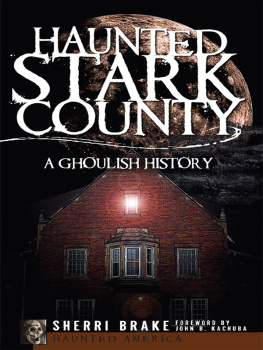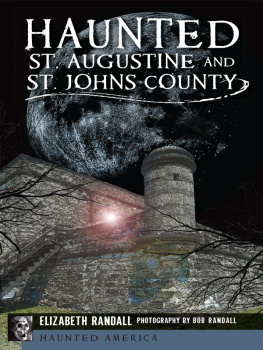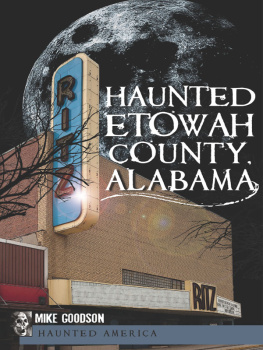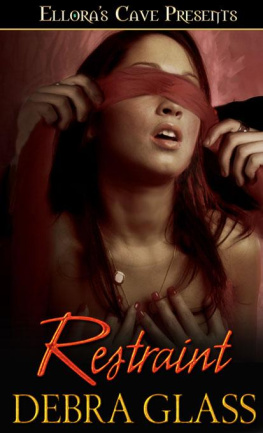Published by Haunted America
A Division of The History Press
Charleston, SC
www.historypress.net
Copyright 2016 by Debra Robinson
All rights reserved
Front cover image courtesy of Vanessa Bechter Photography.
First published 2016
e-book edition 2016
ISBN 978.1.62585.734.7
Library of Congress Control Number: 2016932974
print edition ISBN 978.1.46711.971.9
Notice: The information in this book is true and complete to the best of our knowledge. It is offered without guarantee on the part of the author or The History Press. The author and The History Press disclaim all liability in connection with the use of this book.
All rights reserved. No part of this book may be reproduced or transmitted in any form whatsoever without prior written permission from the publisher except in the case of brief quotations embodied in critical articles and reviews.
This book is dedicated to the first pioneers of Tuscarawas County, some of whom were my ancestors: the Robinson, Beans, Walker, Herron and Leggett families. They arrived in Union Township by cart and oxen, on horseback from states to the east or by sea from County Fermanagh and County Tyrone, Northern Ireland. I owe them all a debt of gratitude for ensuring that I was born and raised in an area I believe is more beautiful and peaceful than anywhere else in the world. This may also be why it is so hauntedno one wants to leave!
As always, for James and D.B.
CONTENTS
ACKNOWLEDGEMENTS
I would like to thank all those who willingly shared their own stories or the experiences of an ancestor. Some wished to remain anonymous for fear of being ridiculed for believing in ghosts. However, all of them experienced frightening or puzzling events. Those who started out as skeptics no longer have any doubt that there is a spirit world. Those who already knew ghosts existed added their own tales. This book would not have been possible without them.
Special thanks to Michael Lehr of Dover Public Library for taking the time to do an interview and to Denise, the best librarian anywhere. Thanks to my author friends Jane Turzillo and Wendy Koile for their help, guidance and support.
Thanks to the Ohio Historical Society for its wonderful photo archives, which made it possible to use many never-before-published photographs of Tuscarawas County. For all those hard-to-get pictures of current and past locations, my eternal gratitude goes to photographer Vanessa Bechter, whose skill and work ethic are superb.
Thanks to Cody Addy, director of Newcomerstown Library, for his help and insight on the Post Boy locations, and to Jon Baker for his knowledge of local history.
Finally, thank you to The History Press for offering me the wonderful opportunity to compile all our regional ghost stories into one volume, as well as to my commissioning editor, Krista, for all her help.
No ghosts were harmed during the writing of this book!
INTRODUCTION
Are you afraid of ghosts? Youre not? Thats good, as theyre all around us. When you live with history, you live with ghosts. Tuscarawas County has a lot of both. There are the spirits of violently murdered victims, the former occupants of many of our stately homes and even the sad specters of those who were first to live on this landthe pioneers and Native Americans. Age is no gauge of hauntings eithera new home is as capable of harboring a spirit as an old estate. Unfinished business, death at a young age or strong emotions seem to be common denominators in haunted sites at both new and old buildings.
Most spirits are harmless; they go about their business doing whatever it was they used to do, unaware of the living in their midst. Some replay their former actions over and over like a tape loop, as though stamped into the fabric of time itself. Some seem aware of the livingthey try to get our attention and communicate things we may not be able to understand. And some are familythe long-dead relatives of current inhabitants who dwelled in the grand homes built more than a century and a half earlier. Sometimes the more recently deceased come back, too, maybe just to keep an eye on us.
Long before March 1808, when Tuscarawas County officially became the twenty-seventh county recognized in the state of Ohio, the area was home to several significant Indian villages, as well as the first Protestant settlement in Ohio, Schoenbrunn. Moravian missionaries settled here with the intent to spread the gospel to the savage red man. Many locals have seen the spirits of those eighteenth-century missionaries, as well as the ghosts of innocent victims massacred by American militia in an infamous local tragedy. As if that werent enough, this county can also claim a Revolutionary War fort where Indian ambushes and starvation created a few more spirits tied to that area.
Tuscarawas County map, circa 1938. Courtesy of the Ohio History Connection.
A few years later, a small settlement of religious separatists formed Zoar village and tried their best to live apart from worldly influence. Their early experiment in communal living was brought downsome say by the evil of the very outsiders they tried so hard to avoid. Zoar is now one of the most haunted towns in the county.
There are so many haunted sites in Tuscarawas County that it would be impossible to fill just one slim volume. This book will tell a portion of them, some of the more infamous stories as well as a few you may not have heard before. From Zoar in the northern section of Tuscarawas County to Newcomerstown in the south, Sugar Creek in the west, Dennison in the east and all points between, the spirits remain here. They carry out their business as usual, and whether or not they notice the living, they will be here long after we are gone. Who knowssome of us may decide to join them.
So sit back, relax if you can and read all about the ghosts of Tuscarawas County.
TUSCARAWAS COUNTYS MOST HAUNTED
ZOAR
Tuscarawas County in northeast Ohio is full of folklore and hauntings, but one small village tops the list. The quaint little village of Zoar is an 1800s jewel woven into the tapestry of northern Tuscarawas County. It also seems to have some of the most dramatic and interesting hauntings anywhere.
Founded in 1817 by nearly two hundred German separatists and their leader, Joseph Bimeler, Zoar was named after the biblical town from the book of Genesis where Lot escaped from Sodom. Joseph Bimeler brought his group to the United States to escape persecution in their own country. The separatists were pacifists, so they would not fight in wars. They had different beliefs, such as not observing any holidays or formal religious traditions like marriage or baptism. A couple simply appeared before witnesses to be married; there was no ceremony or celebration afterward.
In an effort to clarify their beliefs and stop persecution while still in Germany, the separatists published and circulated them prior to 1816:
We believe and confess the Trinity of God, in the Father, Son, and the Holy Ghost;
The fall of Adam and of all mankind, and with the loss thereby of the likeness of God in them;











